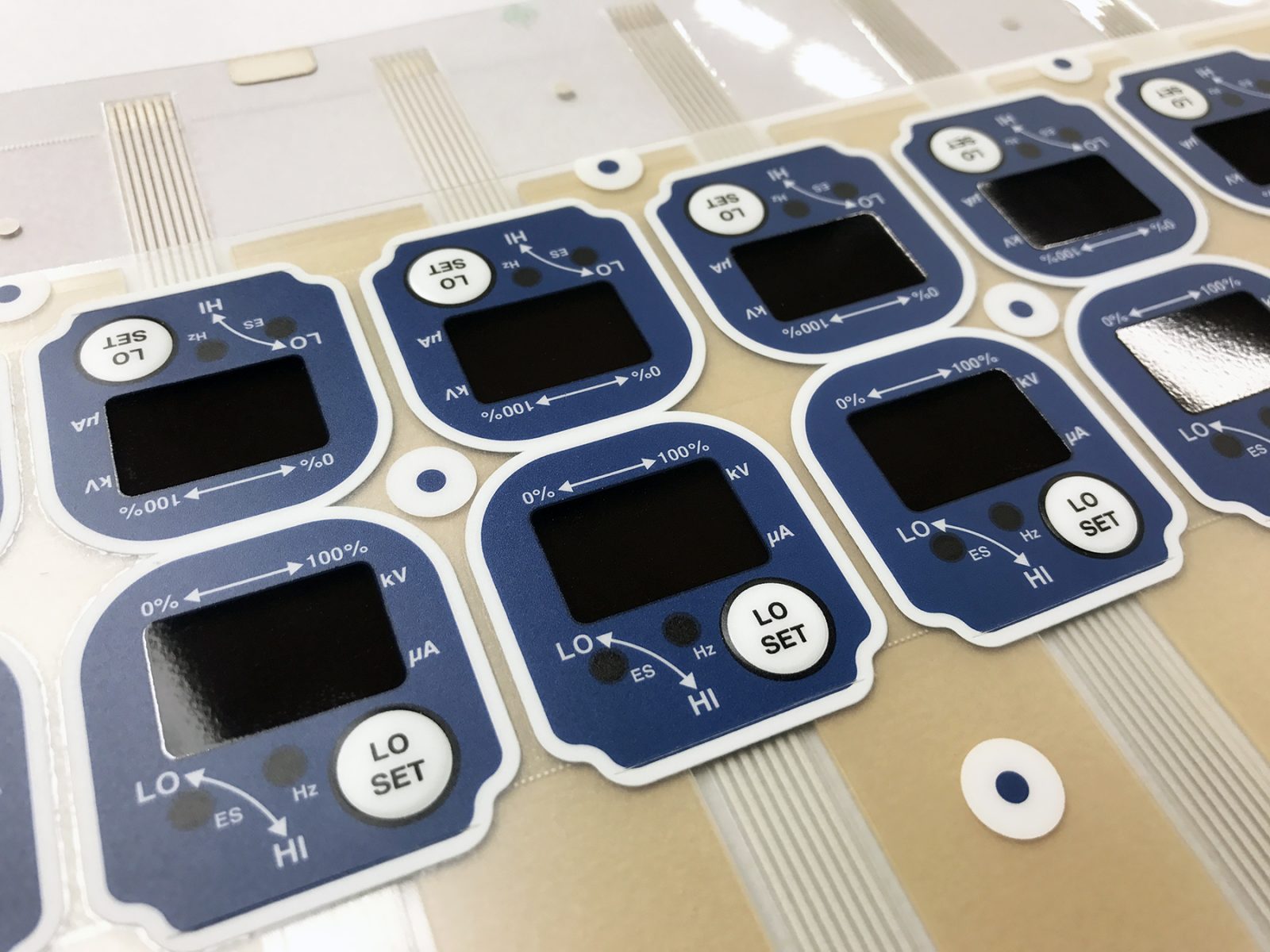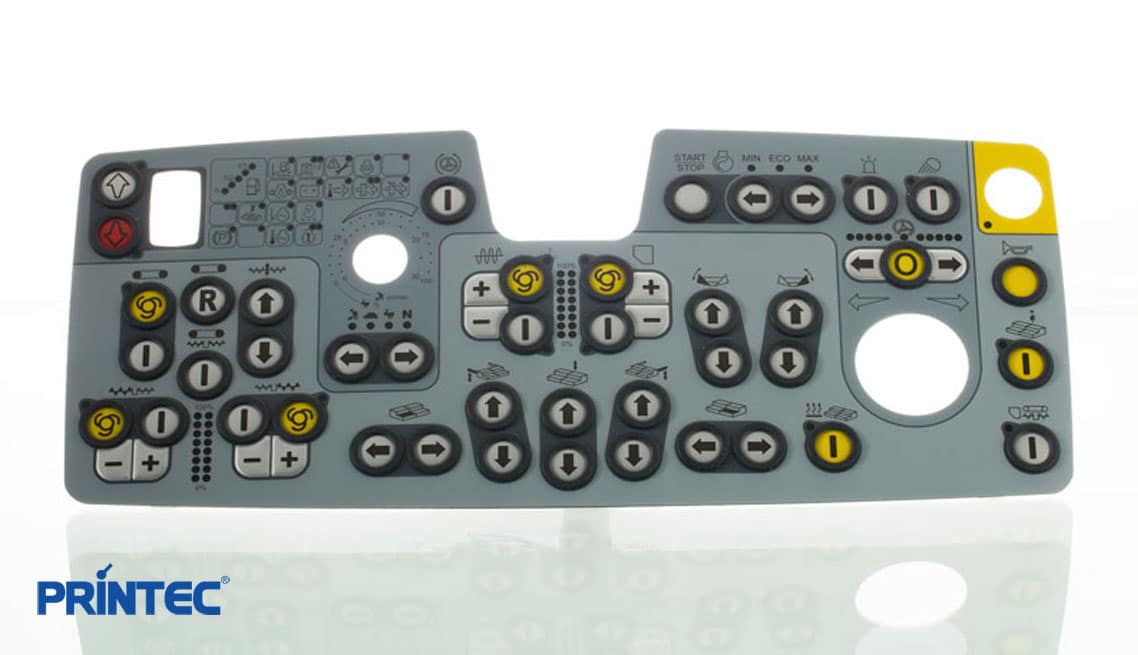An creative membrane switch manufacturer can develop modern features and materials.
An creative membrane switch manufacturer can develop modern features and materials.
Blog Article
All Concerning Membrane Switch: Recognizing Its Style and Functionality
When you think of the control user interfaces in modern devices, membrane layer buttons typically enter your mind. These parts are greater than just switches; they blend layout and capability seamlessly. Comprehending just how they function and what makes them efficient can alter your perspective on day-to-day electronics. But, there are nuances to their layout and performance that you might not recognize. Allow's explore what collections membrane layer changes in addition to other control systems.
What Are Membrane Switches?

Their seamless nature makes them very easy to tidy and immune to dirt and dampness, a vital attribute in numerous environments. Membrane buttons can also be tailored pertaining to form, dimension, and graphics, allowing makers to develop unique interfaces customized to particular items. And also, they're lightweight and slim, which helps in minimizing the total bulk of gadgets. On the whole, membrane buttons play a considerable role in boosting user experience throughout a large selection of applications.
Just How Membrane Layer Switches Over Job
When you push a secret on a membrane switch, it triggers a simple yet reliable mechanism. The leading layer, typically made of flexible product, lowers onto a conductive layer under it. This activity bridges the space in between conductive traces, completing an electric circuit. As soon as the circuit closes, it sends out a signal to the gadget's controller, which interprets your input.
You'll observe that the responsive responses varies based on the switch layout, using either a soft click or a more noticable feedback. As soon as you release the key, the membrane layer returns to its original position, reopening the circuit and stopping the signal. This process happens practically immediately, making sure a receptive customer experience.
Membrane buttons are preferred because of their sturdiness and resistance to dust and wetness, making them perfect for numerous applications, from household home appliances to clinical tools. Recognizing this operation helps you appreciate their widespread use.
Secret Elements of Membrane Layer Buttons
Recognizing the vital parts of membrane switches is fundamental for grasping their capability and design. The safety layer shields against environmental variables and wear, extending the switch's life expectancy. By understanding these elements, you'll acquire insight right into how membrane layer switches over run and their relevance in various applications.
Materials Utilized in Membrane Layer Change Layout
The performance and toughness of membrane changes greatly depend on the products used in their layout. You usually run into polyester and polycarbonate as main substrates as a result of their excellent toughness and flexibility. These products stand up to scrapes and chemicals, making them suitable for demanding settings.
The conductive layers commonly utilize silver or carbon, selected for their reliability and conductivity. membrane switch manufacturer. Silver provides superior performance, while carbon is an economical choice. For the overlay, you might consider a matte or glossy finish, depending on your aesthetic needs and customer experience
Make particular to choose adhesives that hold up against ecological elements like temperature level and humidity. Selecting the ideal materials will certainly guarantee your membrane layer button stands the test of time.
Style Factors To Consider for Membrane Switches
While designing membrane layer switches, it's vital to think about numerous variables that affect their capability and user experience. Start by focusing on the layout and button size; make sure they're intuitive and easy to browse. Think about the tactile comments you wish to provide-- will users need a recognizable click or a softer touch? Additionally, think regarding the materials you'll make use of, as they'll influence sturdiness and aesthetics.
Do not neglect the graphic layout; clear labeling and color comparison are substantial for exposure. Validate your design suits environmental aspects, like moisture or temperature variations, which could impact efficiency. Remember the relevance click for source of screening prototypes with genuine customers to gather feedback and make needed modifications. This repetitive process aids you fine-tune the design, confirming it satisfies both useful and aesthetic demands efficiently. By carefully taking into consideration these aspects, you'll create a membrane layer switch that improves usability and contentment.
Applications of Membrane Switches
Membrane buttons are functional parts found in various applications, from industrial tools to customer electronic devices. You'll see their impact in makers that need durable user interfaces and in tools that take advantage of sleek layouts. Comprehending these applications aids you appreciate the performance and usefulness of membrane layer buttons in daily innovation.
Industrial Devices Usage
When you're looking to boost the performance of commercial equipment, membrane layer switches supply a reputable solution that incorporates durability with easy to use layout. These switches are perfect for rough environments, providing resistance to dust, wetness, and chemicals. Welcome membrane switches to simplify your procedures and boost general performance.
Customer Electronics Integration
In the domain of customer electronics, membrane layer switches address play a vital duty in enhancing user interaction and tool capability. You'll find them in devices like microwaves, remotes, and video gaming consoles, offering a smooth means to interact with modern technology. Their smooth style enables very easy combination into different items, making controls instinctive and straightforward. With their capability to include graphics and backlighting, you can enjoy a modern visual that enhances the device's general look. Membrane buttons also guarantee toughness and resistance to dirt and wetness, prolonging the life expectancy of your electronics. By selecting membrane buttons, you improve not just the capability however additionally the style of your gadgets, making everyday communications smooth and enjoyable.
Advantages and Disadvantages of Membrane Layer Buttons
While membrane layer buttons use a variety of benefits, they additionally come with some disadvantages that you ought to think about. One substantial benefit is their portable style, making them ideal for space-constrained applications.

Nevertheless, there are drawbacks. Membrane switches can have a shorter life expectancy compared to mechanical switches, specifically under hefty usage. They can also be less responsive, which might affect customer comments throughout operation. Additionally, if harmed, fixing them can be challenging and commonly needs complete substitute. Ultimately, their level of sensitivity to severe temperatures and ecological conditions might restrict their effectiveness in particular settings. Balancing these pros and cons will certainly assist you his response identify if membrane layer buttons are the ideal fit for your project.
Regularly Asked Concerns
How Much Time Do Membrane Layer Changes Generally Last?
Membrane layer switches over commonly last between 5 to ten years, depending on use and environmental conditions. You'll desire to evaluate elements like wear, exposure to wetness, and temperature level changes to gauge their durability properly.
Can Membrane Switches Be Customized for Certain Layouts?
Yes, you can customize membrane layer switches to fit specific layouts (membrane switch manufacturer). You'll have the liberty to select colors, shapes, and designs that match your task's demands, guaranteeing they mix perfectly with your general aesthetic
What Is the Price Range for Membrane Layer Switch Over Manufacturing?
The expense range for membrane layer switch production normally drops in between $1 and $10 each, depending upon variables like design intricacy, quantity, and materials. You can get quotes from suppliers to find the most effective option.

Are Membrane Switches Waterproof or Resistant?
Membrane switches can be made to be water-proof or resistant, depending upon products used and building techniques. If you need them for damp settings, guarantee you define those needs throughout the design process.
Just How Do Membrane Layer Changes Compare to Conventional Buttons?
Membrane layer buttons are usually thinner and extra versatile than conventional buttons, providing a sleek style. They're commonly much easier to clean up and incorporate, however may not provide the tactile responses you're used to with mechanical choices.
Final thought

Report this page